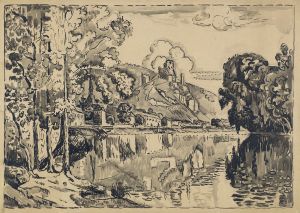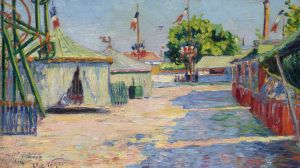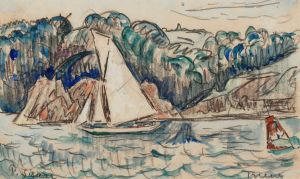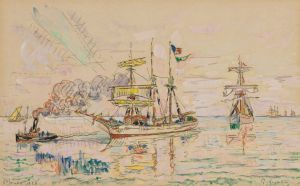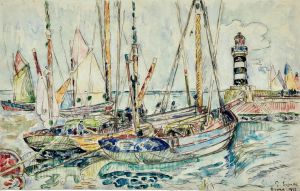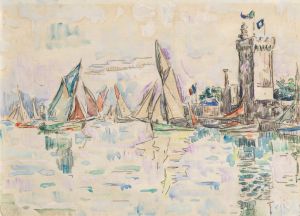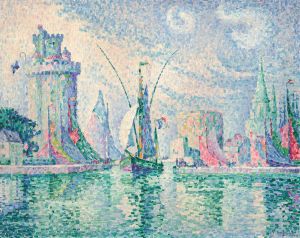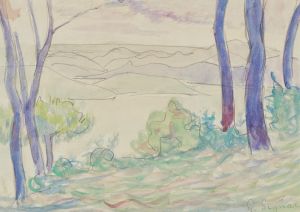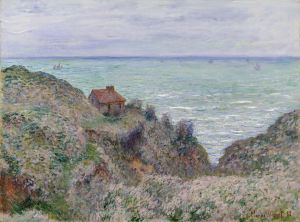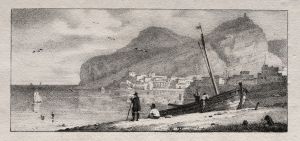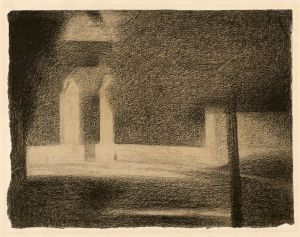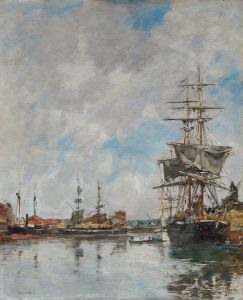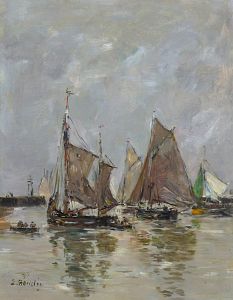
The Tugboat, Canal in Samois
A hand-painted replica of Paul Signac’s masterpiece The Tugboat, Canal in Samois, meticulously crafted by professional artists to capture the true essence of the original. Each piece is created with museum-quality canvas and rare mineral pigments, carefully painted by experienced artists with delicate brushstrokes and rich, layered colors to perfectly recreate the texture of the original artwork. Unlike machine-printed reproductions, this hand-painted version brings the painting to life, infused with the artist’s emotions and skill in every stroke. Whether for personal collection or home decoration, it instantly elevates the artistic atmosphere of any space.
Paul Signac's painting The Tugboat, Canal in Samois is a notable example of the artist's work in the Pointillist style, a technique he helped pioneer alongside Georges Seurat. Created in 1901, the painting depicts a serene canal scene in the village of Samois-sur-Seine, located in the Île-de-France region of France. This area, known for its picturesque landscapes, was a source of inspiration for many artists during the late 19th and early 20th centuries.
Signac's use of Pointillism, characterized by the application of small, distinct dots of color, is evident in this work. The technique relies on the viewer's eye to blend the colors optically, creating a luminous and vibrant effect. In The Tugboat, Canal in Samois, Signac employs this method to capture the interplay of light and water, as well as the tranquil atmosphere of the canal. The painting features a tugboat navigating the calm waters, surrounded by lush greenery and reflections that shimmer on the surface. The composition is balanced and harmonious, showcasing Signac's mastery of color and form.
Paul Signac (1863–1935) was a French Neo-Impressionist painter who played a significant role in the development of modern art. He was deeply influenced by the scientific theories of color and perception, which informed his approach to painting. Alongside Seurat, Signac sought to bring a more systematic and scientific approach to Impressionism, resulting in the development of Pointillism, also known as Divisionism. Unlike Seurat, who often focused on urban scenes and figures, Signac frequently depicted landscapes, seascapes, and scenes of everyday life, as seen in this painting.
Samois-sur-Seine, the setting of the painting, is a small village located along the Seine River. It has long been a retreat for artists and writers, drawn to its natural beauty and peaceful environment. Signac's choice of this location reflects his interest in capturing the charm of rural France, away from the bustling urban centers.
Today, The Tugboat, Canal in Samois is recognized as an important work within Signac's oeuvre and within the broader context of Neo-Impressionism. It exemplifies the artist's dedication to exploring the effects of light, color, and atmosphere through the innovative techniques of Pointillism. The painting is held in a private collection and has been exhibited in various galleries and museums, allowing audiences to appreciate Signac's contribution to the evolution of modern art.





